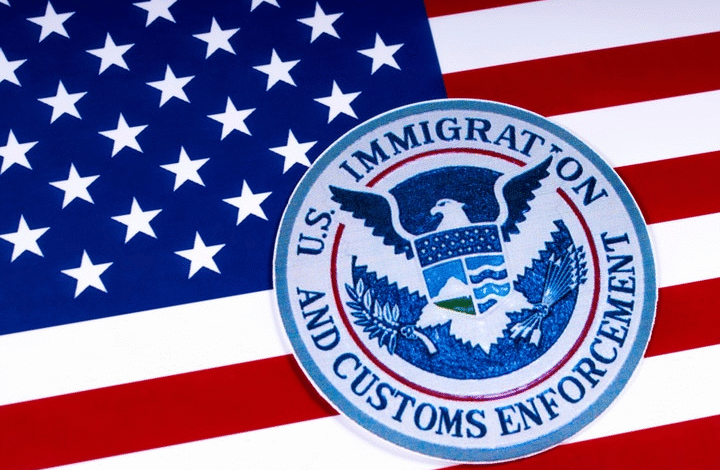Trump Immigration Policy: Effects on the Labor Force

Trump immigration policy is generating significant debate, particularly regarding its impact on the nation’s labor force. Economists warn that the policies enacted during the Trump administration are shrinking the immigrant labor force, which historically has been a vital component of the U.S. labor pool. This decline in immigrant participation could pose serious challenges for the economy, especially given the reliance on immigration for growth amid changing demographic trends. As baby boomers retire and fertility rates decline, the U.S. will increasingly need immigration to bolster its labor market. With experts predicting continued repercussions from these policies, the question remains: what will be the long-term labor market impact of Trump’s aggressive immigration stance?
The immigration policies under President Trump, marked by heightened restrictions and deportations, have stirred significant concern regarding their effects on the workforce dynamics in the United States. With a steadily shrinking foreign-born workforce, analysts highlight the pressing need for an adaptive U.S. labor pool to maintain economic vitality. Many foresee that without a robust influx of immigrants, the U.S. could face persistent labor shortages that compound existing demographic challenges. As the nation navigates these turbulent waters, understanding the intricacies of how immigration shapes the labor landscape becomes crucial for both policymakers and citizens alike. These developments signal a critical juncture for economic and immigration discourse in America.
The Impact of Trump Immigration Policy on the U.S. Labor Pool
The immigration policies enacted during the Trump administration have sparked significant debate among economists regarding their impact on the U.S. labor force. With the introduction of stringent measures like expanded deportations and restrictions on asylum, there are clear indications that the immigrant labor force has been adversely affected. Recent statistics show a sharp decline of 1.2 million foreign-born workers from the labor pool, compelling experts to assess how these changes are reshaping demographic dynamics in the American workforce.
As experts note, the shrinking of the immigrant labor force poses serious implications for the overall U.S. economy. The country’s labor market resilience heavily relies on the contributions of immigrants, who fill crucial roles in various sectors. Economists are increasingly pointing to the need for a strategic reassessment of immigration policies, as the current trends could hinder available labor supply, affecting productivity and leading to higher wages, which in turn may exacerbate inflationary pressures.
Demographic Trends and Their Economic Implications
The ongoing demographic shifts in the United States create a pressing need for a stable and growing labor force, one that immigration can support. As the population ages and fertility rates decline, the reliance on immigrant workers becomes more pronounced. The Trump administration’s immigration policies risk creating a decline in this essential labor source, thus potentially impeding economic growth. Mark Zandi’s observations regarding the significant decrease in the foreign-born labor force underscore the critical nature of these changes.
In light of the increasing reliance on the immigrant labor force to maintain economic stability, ignoring these emerging trends could have profound repercussions. With baby boomers retiring in large numbers, the need for younger workers who contribute to a robust labor market is at an all-time high. However, the policies aimed at restricting immigration threaten to clog the arteries of the economy, leading to shortages in crucial sectors that depend on diverse labor inputs.
The Labor Market Impact of Immigration Policy Changes
The ongoing dialogue surrounding the Trump administration’s immigration policies highlights their potential impact on the labor market. With labor force participation rates among foreign-born workers showing a dramatic decline, analysts are concerned about the long-term sustainability of an economy that heavily depends on immigrant labor. Industries traditionally reliant on this workforce, especially those in agriculture and construction, are likely to face increased challenges as access to labor diminishes.
Furthermore, the tightening of immigration policies raises questions about the future of the U.S. labor pool. Decreased availability of immigrant workers means employers might struggle to fill positions that are critical for maintaining operational efficiency. The labor market’s response to these changes could lead to intensified competition for a diminished pool of available workers, ultimately driving wages higher and affecting the pricing structure across various industries.
Understanding the Dynamics of the Immigrant Labor Force
A closer examination of the dynamics within the immigrant labor force reveals significant changes since January. Data indicating a decrease by approximately 1.2 million foreign-born individuals in the U.S. labor pool buckets a clear warning for policymakers. As immigration policies continue to evolve under the Trump administration, the ramifications for immigrant participation in the workforce and overall economic productivity cannot be overlooked.
The complexities of labor market behavior illustrate that while some industries continue to face labor shortages, the contributing factors from immigration policies are profound. The stark contrasts between states with high and low rates of immigrant detentions highlight how political actions directly correlate with labor market health. As states restricting immigrant presence witness stagnation, it’s evident that these policies are not merely theoretical but indeed have practical implications on employment rates and economic vitality.
The Future of Immigration and Labor Supply in the U.S.
Looking ahead, the trajectory of immigration policy under the Trump administration poses critical questions about the future of the U.S. economy. As the labor supply contracts, economists are left pondering strategies to offset the declining influx of immigrant labor. Initiatives aimed at reversing or softening restrictive immigration regulations may offer pathways to reestablish the essential workforce necessary for a thriving economy.
Moreover, understanding the long-term effects of a shrinking labor pool highlights the urgent need for comprehensive immigration reform. The potential repercussions of current trends—as evidenced by economists like Jerome Powell—illustrate that without corrective actions, the labor market will continue to face increased pressures, further complicating the interplay of wages, inflation, and economic growth. The path forward requires a balanced approach that recognizes the integral role of immigrants in enriching the U.S. labor force.
Reassessing the Economic Role of Immigrants
The economic landscape shaped by immigration policies under the Trump administration necessitates a reevaluation of the role immigrants play in the U.S. economy. Economists are beginning to unravel the complexities behind labor market contractions and their consequences, emphasizing the necessity for a diverse and robust labor force. Evolving demographics require solutions that support—and perhaps amplify—the contributions made by immigrant workers.
Understanding the integral role of immigrants in buoying the labor force goes beyond mere numbers; it encapsulates the cultural, social, and economic fabric of the nation. As job growth in sectors dependent on immigrant labor stagnates, it raises critical concerns about the country’s economic trajectory. Addressing these challenges through informed policy decisions will be essential in fostering a labor market that thrives on the diversity and skills that immigrants bring.
Challenges and Opportunities in the Immigration Debate
The current immigration debate presents both challenges and opportunities for the American labor market. On one hand, the policies enforced by the Trump administration have resulted in documented declines in the immigrant labor force, raising alarms among economists regarding potential workforce shortages. On the other hand, this situation has ignited discussions around the necessity of policy adjustments that could create a more favorable environment for immigrant labor.
As the country grapples with the realities of labor supply and demand, the opportunities for inclusive economic policies become apparent. Advocates for reforming immigration policies argue that a structured approach could bolster the labor market and support the economy by attracting skilled workers. A strategic focus on integrating immigrants into the labor pool is paramount for long-term economic growth and resilience.
Economic Consequences of Diminished Foreign-Born Labor
The economic consequences stemming from reduced participation of foreign-born workers are increasingly evident. As industries report labor shortages and productivity declines, the challenges brought on by stringent immigration policies become clearer. Economists warn that a diminished immigrant labor force could lead to economic stagnation, with businesses unable to secure the workers necessary to meet demands.
Moreover, implications for inflation and wage growth emerge from the ongoing contraction of the labor force. Employers facing increased competition for a dwindling supply of labor may resort to boosting wages, which could drive inflation. The economic cycle becomes more challenging as restrictions on immigration continue to shape market dynamics. Addressing these issues through thoughtful policymaking is essential to ensuring sustainable economic progress.
The Role of Data in Shaping Immigration Policies
Data plays a pivotal role in shaping effective immigration policies and understanding their impact on the labor market. Recent reports from the Bureau of Labor Statistics indicate concerning trends that suggest a shrinking labor pool, particularly among foreign-born individuals. These statistics serve as a wake-up call for policymakers, who must consider the implications of their decisions on the labor market and overall economic health.
Furthermore, reliable data analysis can help identify which sectors most rely on immigrant labor and how policy changes may alter employment patterns. By leveraging comprehensive data, stakeholders can better anticipate future labor trends and craft solutions that mitigate the adverse effects of declining immigration. A data-driven approach will be essential in developing strategies that not only enhance the workforce but also foster economic stability.
Frequently Asked Questions
How is Trump immigration policy affecting the immigrant labor force?
The Trump immigration policy is significantly impacting the immigrant labor force by implementing restrictive measures that have led to a reduction in the number of foreign-born workers. Evidence indicates that the foreign-born labor force has shrunk by approximately 1.2 million since January, contributing to a decline in the overall U.S. labor pool.
What are the economic implications of the Trump administration’s immigration policies?
The economic implications of the Trump administration’s immigration policies are concerning, as the decrease in the immigrant labor force may hinder population growth and overall economic productivity. Economists warn that a shrinking labor pool could lead to higher wages and increased inflation, putting pressure on employers.
What trends have economists observed related to U.S. labor pool and Trump immigration policy?
Economists have observed a definitive downward trend in the U.S. labor pool, particularly within the immigrant labor force, attributed to the Trump immigration policy. The Bureau of Labor Statistics indicates a dramatic decrease in foreign-born workers, suggesting that the policies are negatively affecting sectors reliant on immigrant labor.
How are labor market impacts linked to Trump immigration policy?
The labor market impact of Trump immigration policy is characterized by a weakening labor supply, particularly in industries that heavily depend on immigrant labor. Research notes a stagnation in job growth within these sectors, which may subsequently affect wages and employment opportunities within the broader economy.
What are the long-term effects of Trump’s immigration policies on the economy and immigration?
The long-term effects of Trump’s immigration policies may include a persistent contraction of the labor force, potentially constraining economic growth and labor market dynamism. As the U.S. faces demographic shifts, the reliance on immigration for future labor force growth becomes critical, making the implications of these policies even more pronounced.
How do Trump administration policies compare to previous immigration policies regarding labor force growth?
Trump administration policies are characterized by a more aggressive approach to immigration that contrasts with previous administrations, which typically aimed for more inclusive pathways for immigrant labor. This sharp shift has contributed to a significant reduction in the foreign-born portion of the labor force compared to historical trends.
How are demographic trends affecting the U.S. labor force in relation to Trump immigration policy?
Demographic trends, including an aging native population and declining birth rates, are creating a greater dependency on immigration to sustain the U.S. labor force. The Trump immigration policy, which has restricted access to the labor market for immigrants, poses challenges in addressing these demographic shifts.
What role does fear play in the participation of the immigrant labor force under Trump immigration policy?
Fear stemming from increased immigration enforcement and Trump administration policies has been noted to impact the participation of the immigrant labor force. Reports of heightened arrests and deportations have led to a perception of insecurity, deterring many potential workers from entering the labor market.
| Key Point | Details |
|---|---|
| Impact of Trump Immigration Policy | Trump immigration policies are reducing the size of the immigrant labor force and overall U.S. labor pool. |
| Economic Concerns | Experts warn that these trends could create challenges for the U.S. economy as reliance on immigration increases. |
| Decline in Immigrant Labor Force | Data shows approximately 1.2 million decrease in foreign-born workers since January, totaling 32.1 million. |
| Labor Supply Trends | The U.S. labor force has declined for three consecutive months, with fear affecting workforce participation. |
| Federal Reserve Acknowledgment | Jerome Powell states immigration policy is contributing to the slowdown in labor supply. |
Summary
The Trump immigration policy has led to a significant reduction in the immigrant labor force, creating potential challenges for the U.S. economy. As experts continue to analyze the impacts of these policies, it is clear that immigration will play a critical role in sustaining labor force growth amidst shifting demographic trends. It’s essential to consider how such policies affect not only immigration but also the broader economy and labor market dynamics.



